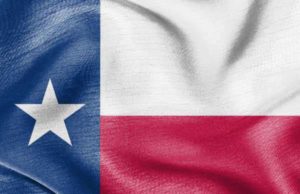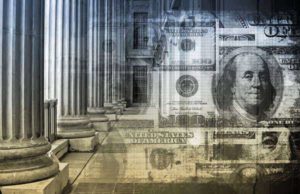
State Legislature Background
State legislatures are those branches of the state government which have the legislative powers. This means that state legislatures, in general, will have powers with regard to passing bills and legislation, as well as powers with regard to modifying or repealing legislation. The exact specifics of each state legislature will likely vary from state to state, including the terms with which they are known. Every state legislature is a bicameral legislature except for Nebraska.
Michigan Legislature
The Michigan Legislature is a bicameral legislature with 148 total members split up between the Michigan Legislature Senate and the Michigan House of Representatives. The Michigan Senate has 38 members, each from his or her own district, and the Michigan House of Representatives has 110 members, again, each from his or her own district. The Michigan House Legislature imposes terms of two years on members of the lower house, and four years on members of the upper house.
California Legislature
The California State Legislature is the legislative body for the state of California. The California State Legislature is split up into the California State Assembly, and the California State Senate, with 40 members of the upper house of the California Legislature, and 80 members of the lower house of the California Legislature.
Florida Legislature
The Florida Legislature is split up into two houses as a bicameral institution. The upper house of the Florida Legislature is the Florida Senate, and the lower house in the Florida Legislature is the Florida House of Representatives. The Florida Legislature has 160 members, with 40 members belonging to the Florida Senate and 120 members belonging to the Florida House of Representatives.
New Mexico Legislature
The New Mexico Legislature is made up of 112 members. 70 members of the NM Legislature belong to the lower house of the New Mexico Legislature, which is known as the New Mexico House of Representatives. 42 members of the NM Legislature belong to the upper house of the New Mexico Legislature, which is known as the New Mexico Senate.
New Jersey Legislature
The New Jersey Legislature was defined in the most recent form of the New Jersey Constitution, which was ratified in 1947, though it has been modified since then. Currently, the NJ Legislature is made up of 120 members, 40 of whom belong in the upper house, called the Senate, and 80 of whom belong in the lower house, called the General Assembly.
Montana Legislature
The Montana Legislature, as a bicameral institution, is split into two houses. The upper house of the Montana Legislature, which contains 50 members of the Montana Legislature, is known as the Montana Senate. The lower house of the Montana Legislature, which contains 100 members of the Montana Legislature, is known as the Montana House of Representatives.
Oregon Legislature
The Oregon Legislature is otherwise known as the Oregon Legislative Assembly, and is split into two houses. The upper house of the Oregon Legislature is the Oregon Senate, and the lower house of the Oregon Legislature is the House of Representatives. The Oregon Legislature is made up of 90 members, with 30 members belonging to the Senate and 60 members belonging to the House of Representatives.
Arizona Legislature
The Arizona State Legislature convenes in the Capitol Complex in Phoenix Arizona. The Arizona State Legislature is made up of 90 members, who are split between the Arizona Senate and the Arizona House of Representatives. The Arizona Legislature includes one district for each member of the Arizona senate, with those districts being split in half for the Arizona House of Representatives.
Nevada Legislature
The Nevada Legislature includes 63 different members. 42 of the members of the Nevada State Legislature are actually members of the Nevada Senate, the upper house of the Nevada State Legislature, while 21 of the members of the Nevada Legislature are members of the Nevada House of Representatives, which is the lower house of the Nevada State Legislature.
Minnesota Legislature
The Minnesota Legislature is made up of 201 members, making it a fairly large state legislature compared to many other state legislatures. The Minnesota Legislature includes 134 members of the Minnesota House of Representatives, and 67 members of the Minnesota Senate. The Minnesota Legislature only involves 67 districts, which are split in half for the House of Representatives.
Illinois Legislature
The Illinois Legislature is a bicameral institution, meaning that it is made up of the upper house, the Illinois Senate, and a lower house, the Illinois House of Representatives. The Illinois Legislature is made up of 59 Senators, each from one of the 59 districts, and 118 Representatives, two from each of the 59 different districts. The Illinois Legislature is also known as the Illinois General Assembly.
Colorado Legislature
The Colorado Legislature is the legislature for the state of Colorado, and is made up of 100 members. 65 members of the Colorado Legislature belong to the Colorado House of Representatives, which is the lower house of the Colorado Legislature, while 35 members of the Colorado Legislature belong to the Colorado Senate, which is the upper house of the Colorado Legislature.
Kansas Legislature
The Kansas Legislature is the legislature for Kansas. The Kansas Legislature convenes in the Kansas State Capitol Building in Topeka, Kansas. The Kansas Legislature is made up of the Kansas Senate and the Kansas House of Representatives. There are 165 members of the Kansas Legislature, with 125 of those members belonging to the House of Representatives and 40 belonging to the Senate.
New York Legislature
The New York Legislature is the state legislative body for New York State, and is made up of 212 members at the current time. Out of these 212 members of the New York State Legislature, 150 are members of the New York State House of Representatives, while the other 62 members of the New York Legislature are members of the New York Senate, which can vary in size.
Oklahoma Legislature
The Oklahoma Legislature is a bicameral institution composed of the Oklahoma House of Representatives and the Oklahoma Senate. The Oklahoma Senate is a body made up of 48 members of the Oklahoma Legislature, while the Oklahoma House of Representatives includes the other 101 members of the Oklahoma Legislature.
Hawaii Legislature
The Hawaii Legislature convenes in Honolulu, on the island of Oahu in Hawaii. The Hawaii Legislature is made up of the Hawaii Senate and the Hawaii House of Representatives. The Hawaii Legislature is made up of 76 members in total, with 51 members belonging to the Hawaii House of Representatives, and 25 members belonging to the Hawaii Senate.
Utah State Legislature
The Utah State Legislature is made up of the Utah State Senate and the Utah State House of Representatives. The Utah State Legislature includes a total of 104 members at the current time, 29 of who belong to the Utah Senate, and the other 75 of whom belong to the Utah House of Representatives.



































